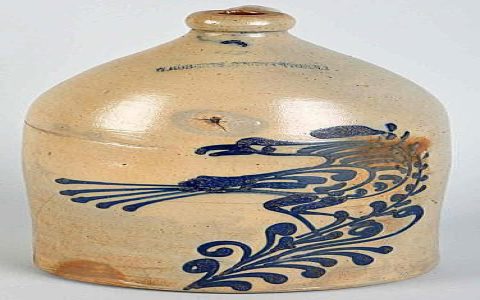Determining the value of antique stoneware bowls involves evaluating a combination of factors. There's no single price guide, as values can range from under $50 to several thousand dollars or more. The three most critical elements influencing worth are:
1. Maker/Potter and Marks
- Identified Makers Command Premiums: Bowls from renowned potters or pottery companies (e.g., Red Wing, Norton, Monmouth, William Grueby, George Ohr, known Southern potters) are significantly more valuable than unmarked "folk" pieces. A clear, legible maker's mark is crucial.
- Reputation & Rarity of Maker: Potters with established artistic reputations or those whose work is scarce due to limited production periods increase value. Research specific maker marks.
- Counterfeits Exist: Be wary of newly added fake marks on old, otherwise unremarkable pieces.
2. Age, Origin, and Style
- True Antique vs. Vintage: Generally, pieces 100+ years old (pre-1920s) are considered antique, often valued higher than mid-century vintage stoneware, though notable exceptions exist (e.g., specific art pottery).
- Design Period & Movement: Bowls reflecting distinct historical periods (e.g., Arts & Crafts, Art Nouveau) or artistic movements carry value linked to collector interest in those styles. Unique decorative techniques (e.g., incised designs, slip trailing, Albany slip glaze, elaborate hand-painting) add value.
- Regional Characteristics: Specific regions developed distinctive styles and glazes (e.g., salt-glazed stoneware, cobalt blue decoration common in Northeastern US, face jugs or alkaline glazes in the South). Authentic regional characteristics are desirable.
3. Condition, Rarity, and Form
- Condition is Paramount: Chips, cracks (especially through the body), significant glaze scratches, and heat damage drastically reduce value. Intact, stable glaze with desirable surface characteristics (e.g., "orange peel" texture, running glazes) is essential for maximum worth. Minor flea bites or glaze pops may be acceptable on very old or rare pieces but still detract value.
- Intrinsic Rarity: Unusual sizes (very large mixing bowls, very small miniatures), specific documented forms (e.g., butter churns, specific pie dish shapes), or unique glaze colors/combinations significantly increase desirability and value. Common, utilitarian bowls in standard sizes are less valuable.
- Provenance: Documented history linking the bowl to a famous potter, significant collection, or historical event can add substantial value, but provenance must be verifiable.
Accurately valuing an antique stoneware bowl requires examining all three factors concurrently. An unmarked, chipped 19th-century utilitarian bowl might be worth $50-$150. Conversely, a signed, pristine example by a sought-after maker (e.g., Ohr) in an exceptional glaze could command prices well into the thousands. Always consult reputable reference materials, auction records for comparable items, or a certified appraiser specializing in ceramics for significant pieces.











